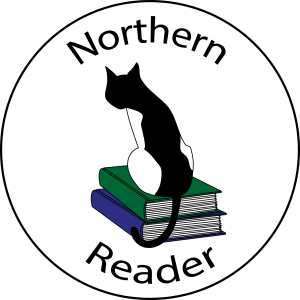The Doodled Asterisk by R.A.J Walling – a Second World War novel of mystery and more republished by Oreon at Oleander Press

The Doodled Asterisk by R.A.J Walling
This is a rather exciting novel of mystery and surprises set in the heat of the Second World War – March 1941 to be exact – and first published in 1943 when nothing was certain. Oreon Publishing at the Oleander Press has chosen this book to republish, and I was very pleased to have the opportunity to read and review it. It features a small group of people who not only witness a severe raid at the fictional city of Westport but have to deal with the mysterious after effects when the tally and condition of bodies does not agree. It is full of the details of the effects of a sustained bombing raid from a first-hand point of view but not from a sentimental perspective. The main characters have undefined secret roles but are nevertheless distinct people. It is narrated by James Farrar, who is vaguely aware of the roles of those he meets but is generally a little confused by events and thus gives the reader’s perspective. It is written with a sort of hesitant immediacy, as some actions are considered, while others are based on reactions to unforeseeable events. With elements of murder mystery, espionage thriller and a portrait of London and other places at war it is a lively and engaging read, of its time yet well written enough to still entertain. The personalities of the characters emerge, but essentially this is a book of action and some danger.
Farrar is a fire watcher “with (his) occupation gone” but obviously with sufficient financial means to live as comfortably as anyone can in blitzed wartime London. When he encounters the mysterious friend Tolefree, he says that he is going to Westport to meet an unknown letter writer Blenkinsop, who has a message for him from a ship’s captain. Tolefree immediately seizes on the opportunity to accompany him on apparent impulse, but it soon becomes obvious that he knows much more than he is letting on. On arriving at Westport they encounter another man who also seems involved in the general mystery, before Tolefree examines an apparently idle doodle which reveals a room number in the main hotel. Before Farrar and Tolefree can follow up on any information, of which Tolefree obviously has much more, a severe raid erupts on the town and the picture becomes very confused. While gunshots have been heard previous to the bombs falling, it is soon impossible to investigate what is really going on in all the confusion. The men depart from a farmhouse outside the danger zone, but even in this simple accommodation strange events continue. Following leads and clues will see Farrar being involved in many adventures, including a countryside visit and discovering the backstreets of London as he struggles to discover just how important the events in Westport will be to a greater challenge.
This is an exciting read which is far more than a whodunit, as greater mysteries emerge with bigger implications than murder. There are times when it can be a little confusing, but that reflects the confusion in the mind of the narrator as he tries to discover what is really going on. It is a bit of a boys own adventure but is written with real depth and understanding of the characters, especially family loyalty and who is genuinely doing their best in impossible circumstances. I think this book can be read as a contemporary record of what it was actually like to experience an air raid, and how people would have to flee their homes and seek help outside population centres in order to survive, and how those who had experienced the fighting involved in the previous World War reacted to a whole new set of challenges. When this book was actually written the future was still not certain, and its first readers would themselves recognise the suspicion of others as well as the effects of War. I would recommend this book to those who enjoy murder mysteries, thrillers and a real slice of wartime life.


